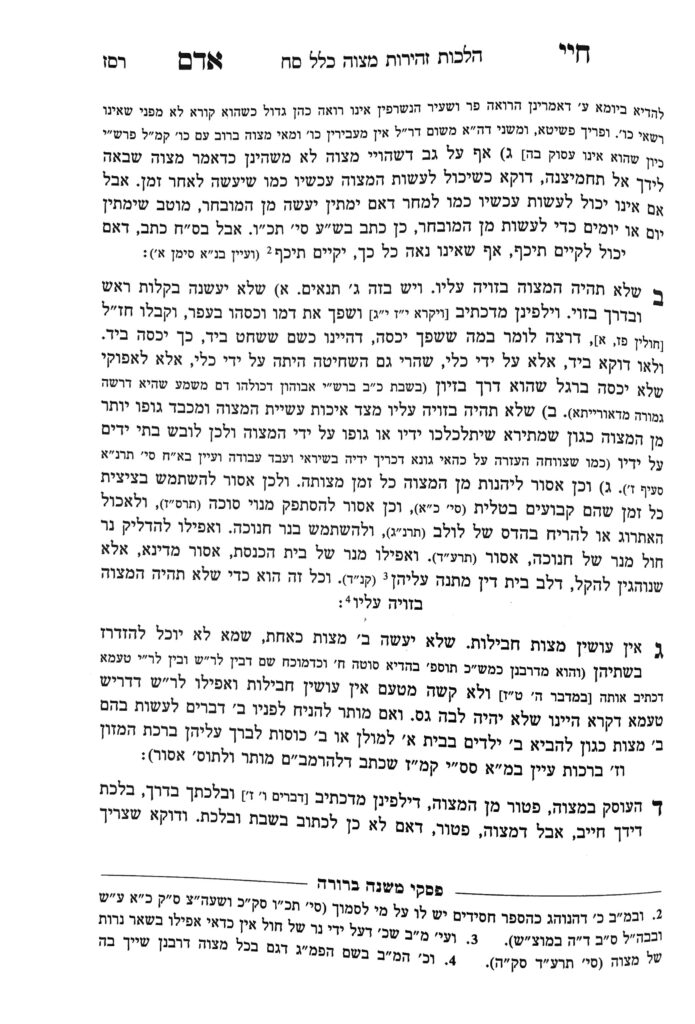We are beginning siman 2. Although the point of the Chayei Adam will appear to be obvious, he will explain specific points which fall under the umbrella of this idea, and will codify it for us.
The Chayei Adam writes that one cannot perform a mitzvah in a manner which appears to be a bizayon, degrading to the mitzvah.
The Chayei Adam gives three applications to this concept. The first is that one should not do a mitzvah in a manner which appears flippant and degrading. This application is based on the pasuk vechisahu be’afar, the source for the mitzvah of kisui hadam. When one slaughters a bird or a kosher wild animal, the blood must be covered with dirt. (There is no mitzvah to do kisui hadam for a domesticated animal.)
The halacha is that one cannot use their foot to push the dirt onto the blood. Rather, one should use the same hand with which they shechted to cover the blood. One does not necessarily need to use their actual hand, but can use an implement, the same way they use an implement for the actual shechita. The point is that one should not use their foot or otherwise perform the mitzvah in a degrading manner. According to Rashi, this idea is not just an asmachta (a rabbinic mitzvah with a pasuk which indicates its concept), but a full-fledged deoraysa concept.
The Gemara applies this concept to other mitzvos as well. The application to kisui hadam seems to be obvious, and it is difficult to understand why the Torah even needed to teach it.
When the Rambam brings down this mitzvah, he writes that “one should not degrade this mitzvah, because the kavod is not for the mitzvah itself but for the One who commanded it”. The Rambam continues, and writes that Hashem gave us all mitzvos to save us from groping in the dark, and to serve as a light for us to determine what is right. Therefore, we should look at this mitzvah as a tremendous gift from Hashem, and observe the mitzvos with tremendous respect.
The chasm Sofer uses a point from the Ramban to explain the Rambam. Regarding kisui hadam, the Ramban explains a kabbalistic reason for covering the dam. He writes that there are ruchos ra’os in the dam, and astrologers would take advantage of these ruchos to foretell the future. Therefore, the Chasam Sofer explains, that it would actually make sense to perform kisui hadam with one’s feet, to demonstrate that we have nothing to do with these practices. Thus, he concludes that even though the concept may be true, one needs to give respect to the One who commanded us in this mitzvah. That is the point of the Rambam.
Every time one performs a mitzvah, they should think about these ideas and perform the mitzvos with tremendous respect.
Summary
One should not perform a mitzvah in a manner which appears to be a bizayon. The first application of this concept is that one should not perform a mitzvah in a flippant or degrading manner.



